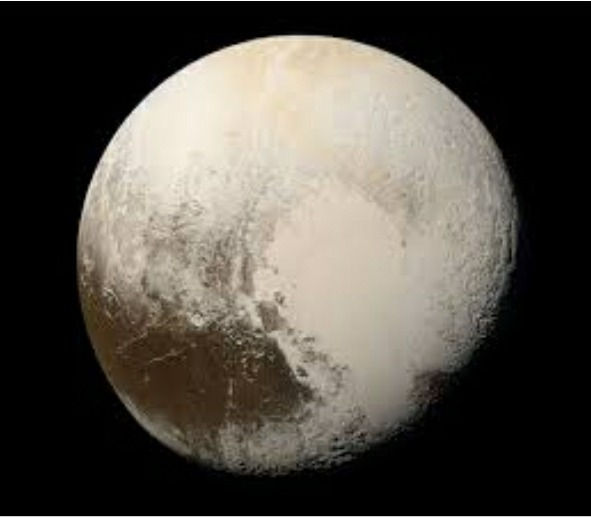PLUTO THE DWARF PLANET
- Jeril Varghese Jiju

- Jun 5, 2020
- 2 min read
Key Facts & Summary
Pluto is the ninth-largest and tenth most massive known object directly orbiting the Sun.
It is the first Kuiper Belt object to be discovered and it is the largest known plutoid.
Pluto was discovered in 1930 by Clyde Tombaugh.
Pluto was classified as a planet for 75 years. It held the title of the ninth planet of the Solar System.
Pluto was declassified from the status of planet to that of a dwarf planet in 2006 after another dwarf planet, Eris was discovered.
The controversial classification of Pluto forced the scientific community to come up with the definition of a planet.
Pluto is primarily made out of ice and rock. It is relatively small even when compared to Earth’s Moon, being one-sixth of the moon’s mass, and one-third of its volume.
Pluto has an unusual orbit that takes it closer to the Sun than the farthest planet Neptune, but also, it takes it farther from the Sun than Neptune’s position.
Pluto has five known moons: Charon, Styx, Nix, Kerberos, and Hydra.
Pluto’s moon Charon is the largest, having around half of Pluto’s diameter.
Charon is the biggest known moon of any dwarf planet.
Pluto has a radius of 1.185 kilometers / 737 miles, thus it is 1/6 the width of Earth and a diameter of 2.326 km / 1.445 mi.
Pluto has mountains, valleys, and craters. The surface temperatures vary from -375 to – 400 degrees Fahrenheit / – 226 to – 240 degrees Celsius.
Pluto is one third made out of water. Its atmosphere is very similar to that of a comet since it collapses as it moves away from the Sun, and expands as it gets close.
Pluto doesn’t seem to have a magnetic field.



Comments